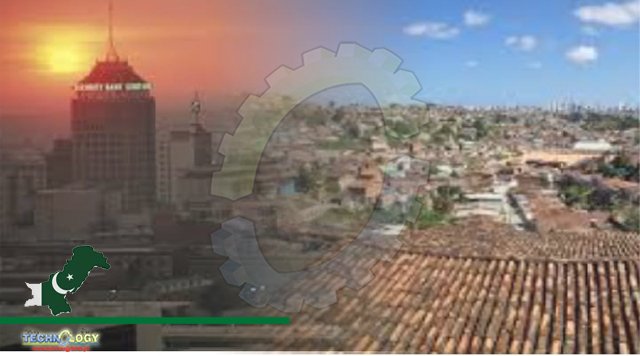Global human population, mega cities expansion and urban development are increasing at unprecedented rates, creating huge stress on worldwide natural resources, environment and water and air quality.

Driven by multiple socioeconomic and environmental processes, the impact of urbanization on environment is profound and multifaceted generating massive human activity. This tendency deprives communities of greenery and forest covers, damages eco-system and contaminates air and groundwater in terms of vehicular and industrial emission, construction of roads and houses and use of fossil fuels. According to UN-Habitat findings, the global-community is becoming increasingly urbanized with more than half of the population living in cities exerting extra pressure on resources and multiplying climate change challenges. Therefore, the United Nations Programme for Human Settlements (UN-Habitat) has been tasked with promoting sustainable development of global cities and towns by maintaining environmental standards through comprehensive urban planning. With the massive population influx, the situation of our cities is deteriorating.
Urbanization, Agriculture land is being used for housing societies and expanding cities are exerting extra burden on civic amenities like clean water supply, sanitation and sewerage and roads infrastructure. “In Lahore alone, groundwater level, in recent years, has fallen at a rate of about 2.6 to 3 feet (0.8 to 0.9 meters beneath) per annum,” said WWF-Pakistan expert Sohail Naqvi. “If the population influx continued with same pace, the current water table of 130 feet is likely to go down to 230 feet by 2025.” He said this mass migration also resulted in air pollution, land degradation, waste management and sanitation and sewerage problems challenges. Keeping in view this worsening situation, the Water and Sanitation Agency (WASA) in Lahore has now started water rationing by turning off unnecessary water connections and providing water to users during fixed hours. Similarly, the waste generation also increases with the population influx and presently Lahore city generates around 5,600 tons of waste daily that is dumped at Lakhodair and other sites.
urbanization, Another example is of Faisalabad, where rising population, dumping of industrial waste and effluent mixing with ordinary drains had badly affected the ground water. Traffic mess and its emissions has polluted air and choked drains resulted in roads depreciation adding to miseries of the people. “Due to industrial and vehicular emissions, the air quality and groundwater had badly been affected in the city,” said Dr Salman Ali Khan, Director National Institute of Biotechnology & Genetic Engineering (NIBGE). “This deterioration is resulting multiple kidney, lungs and heart diseases and even cancer.” “We are already touching the scarcity level in terms of per capita water availability besides challenges of waste disposal, sewerage treatment, vehicular and industrial emissions,” he said. Dr. Salman emphasized to promote awareness and strict implementation of laws to ensure healthy future for coming generations. Situation in Karachi is also known to everyone where present rainy spell has badly exposed the administration as its streets and road were seen flooded with sewerage outflow. Air pollution, waste disposal and clean drinking water availability are other problems. Tanker mafia charges the resident as per its will and certain areas people complaint of their exploitation.
Federal Capital is also not an exception where population increased 150 percent during year 1998 to 2017. Most of wetlands and green area has been replaced with towns and housing societies and its nullahs and natural brooks are now flooded with sewage. More than one million vehicles registered with the Islamabad excise Department are continuously polluting city’s environment. Noted environmentalist Mehmood Khalid Qamar has pleaded that expanding cities are an amplifier of great relevance to climate adaptation strategies and the modern research has tacked many ways to effectively mitigate air and water quality deterioration. “We need to manage urban environment quality through climate-sensitive urban designs,” he said and stressed to promote better planning and understanding of the environmental issues. “We also need strict implementation of laws and penalize across the board all those violating these laws.” Intensified human activities in cities have led to increased greenhouse gases emission and vehicular and industrial emissions damaging eco-system, vegetation, ground water and air quality.
The urban ecological footprint is also on rise due to use of fossil fuels, construction work sectors and incapable system to deal with solid and liquid waste. Lahore Development Authority (LDA) former Director Estate Management, Aslam Langah has said that consumption choices and human lifestyle are profoundly changing the infrastructure, size and density of cities. “Cities expansion on an unusual pace is alarming and calls for immediate and effective measures as we need socially and economically balanced growth without further cost to the environment,” Langah said. The crux of the matter is that if these cities are poorly managed, urbanization can be detrimental to sustainable growth and development. Therefore, sustainable urbanization can be a better choice ensuring implementation of existing laws and frame the new one if required to avert the environmental losses that have already exceeded Rs one billion a day. Recent unusual rainy spell and floods across the country are also an eye opener for the policy makers, calling for adoption of a holistic approach with involvement of all stakeholders to save our resources and secure better future for coming generations.
Source: This news is originally published by app